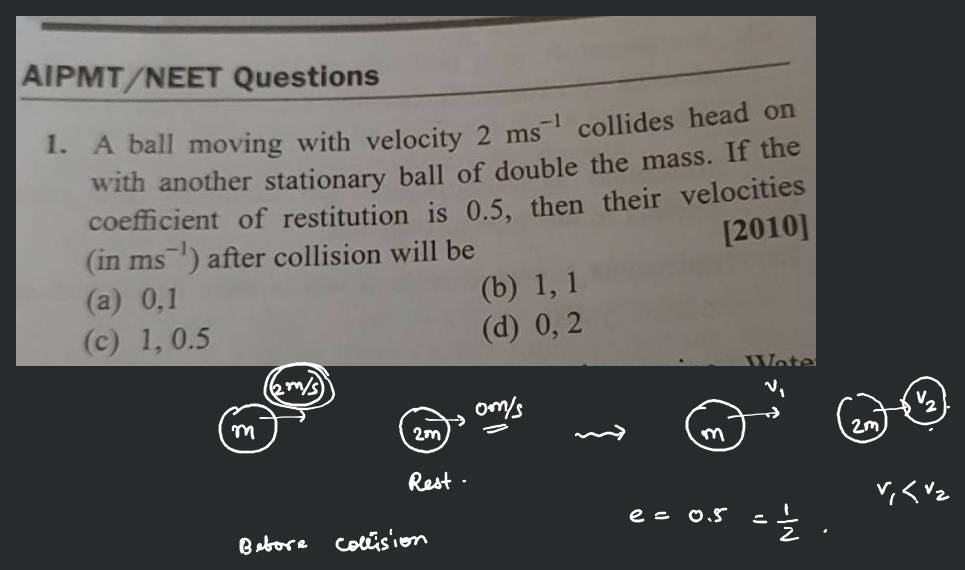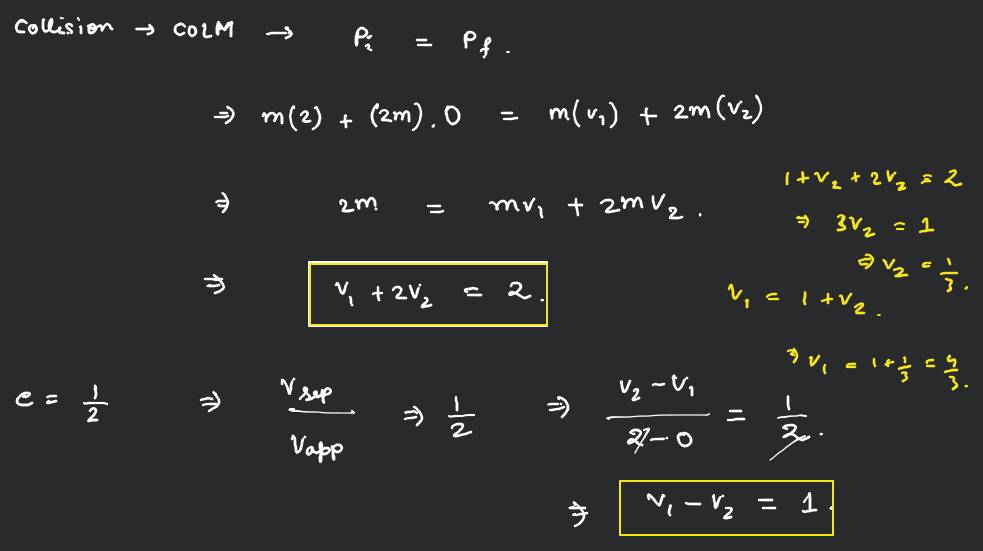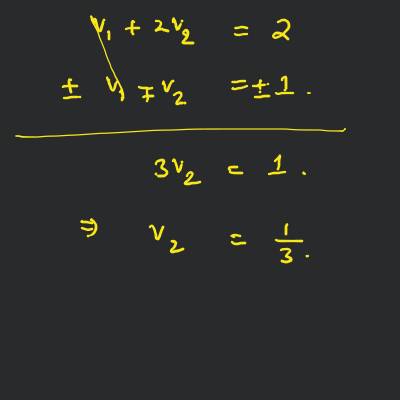Question
Medium
Solving time: 3 mins
A ball moving with velocity collides head on with another stationary ball of double the mass. If the coefficient of restitution is then their velocities (in ) after collision will be
Found 2 tutors discussing this question
Discuss this question LIVE
11 mins ago
 Text solution
Text solution Verified
Verified
Here,
Coefficient of restitution,
Let and be their respective velocities after collision.
Applying the law of conservation of linear momentum, we get
or
or
By definition of coefficient of restitution,
or
Solving equations (i) and (ii), we get
Coefficient of restitution,
Let and be their respective velocities after collision.
Applying the law of conservation of linear momentum, we get
or
or
By definition of coefficient of restitution,
or
Solving equations (i) and (ii), we get
Was this solution helpful?
73
Share
Report
Filo tutor solutions (2)
Learn from their 1-to-1 discussion with Filo tutors.

One destination to cover all your homework and assignment needs
Learn Practice Revision Succeed

Instant 1:1 help, 24x7
60, 000+ Expert tutors

Textbook solutions
Big idea maths, McGraw-Hill Education etc

Essay review
Get expert feedback on your essay

Schedule classes
High dosage tutoring from Dedicated 3 experts
Practice more questions from System of Particles and Rotational Motion
Question 1
Hard
Views: 6,131
Question 2
Medium
Views: 5,406
Question 3
Hard
Views: 5,753
Question 4
Easy
Views: 5,178
Practice questions on similar concepts asked by Filo students
Question 2
Views: 5,667
Question 3
Views: 5,809
Question 4
Views: 5,809


Stuck on the question or explanation?
Connect with our Physics tutors online and get step by step solution of this question.
231 students are taking LIVE classes
| Question Text | A ball moving with velocity collides head on with another stationary ball of double the mass. If the coefficient of restitution is then their velocities (in ) after collision will be
|
| Updated On | Jan 29, 2023 |
| Topic | System of Particles and Rotational Motion |
| Subject | Physics |
| Class | Class 11 |
| Answer Type | Text solution:1 Video solution: 2 |
| Upvotes | 297 |
| Avg. Video Duration | 4 min |






